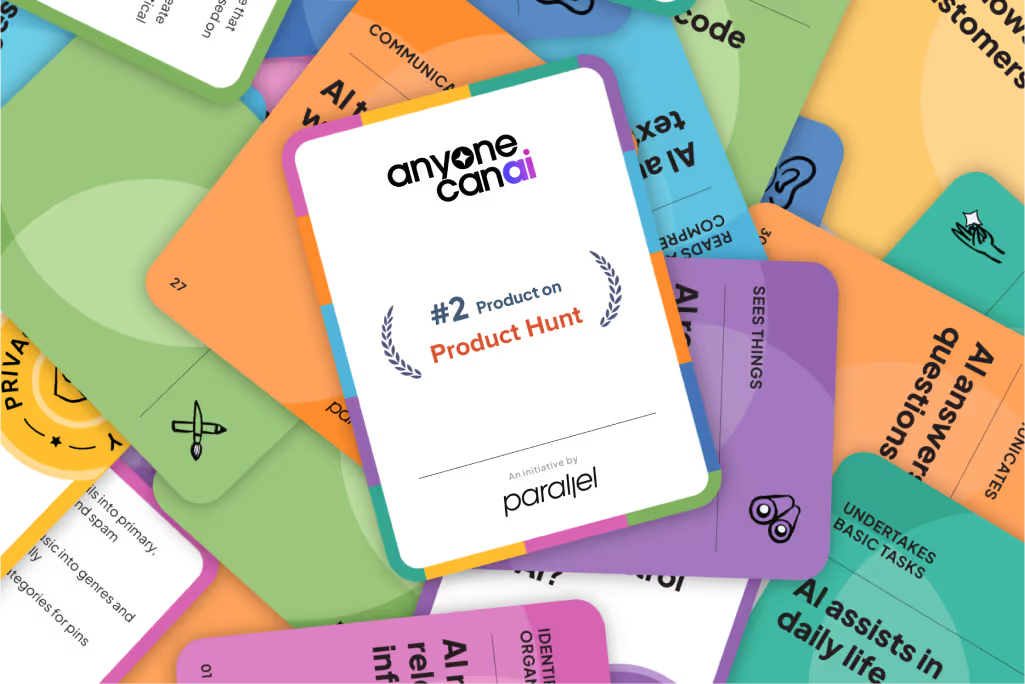Energise Your Remote Workshop with 5 Awesome Icebreakers
Now that everyone is in front of a screen, in the comfort of their homes, distractions are plenty, and it's too easy to feel disconnected. So how do we feel connected and keep our minds fresh over long Zoom workshops?

"Can you hear me?"
"Can you see my screen?"
This is the soundtrack of the world's new work-from-home routine.
As we all brought meetings online, it quickly became clear how video calls can be boring and unimaginative. Our social feeds are full of posts about 'Zoom fatigue' (the mental exhaustion you feel after back-to-back Zoom meetings) and productivity tips as everyone tries to figure out how to make remote collaboration work.
This is an especially big challenge for virtual Design Sprint workshops. Design Sprints demand dedicated focus from participants. Now that everyone is in front of a screen, in the comfort of their homes, distractions are plenty, and it's too easy to feel disconnected from people in different teams, functions and locations.
So how do we feel connected and keep our minds fresh over long Zoom workshops?
An icebreaker is the perfect way to keep people engaged — it fosters connection, breaks down stereotypes and presumptions, and encourages familiarity. It also lets people get used to the day's remote tools as they fill or drag sticky notes, vote with stickers, or work within a set time.
In this article, we brought together five great icebreakers that can be used at the start of a remote Design Sprint or even in between activities — to liven up the environment, to keep minds fresh and keep that Zoom fatigue at bay!
Icebreaker #1: 3-Part Question
Let's keep it simple for our first one. Folks at AJ&Smart recommend this 3-part question exercise.
Each participant is asked to create three sticky notes to complete one of these sentences:
- “My name is…”, “My first job was…” and “Something I learned there was…”
- “My name is…”, “My role is…”, and “My wish for the sprint is…”
- "My name is...", "My favourite app is...", and "I like it because of its...."

Why this icebreaker works well:
- It's straightforward with little explanation required, so participants can jump into the exercise quickly.
- It uses simple questions to help people relate to one other in ways they may not have expected.
When should you use this icebreaker?
- It's effective for groups where the participants come from diverse teams and functions.
- It works great for a group of individuals who haven't collaborated together before.
- It's a good exercise for time-bound sessions, since it's quick to explain and complete.
Icebreaker #2: Two Truths and a Lie
If you are looking to liven up your call after a focussed activity, we recommend Two Truths and a Lie.
Ask your participants to write three simple statements — two of which are truths about them, and one of which is a lie. The statements can be about their talents, professional skills, achievements, or anything you can imagine.
Give them five minutes to fill up three sticky notes, placed against their name. After this, take a minute to vote on each participant's lie. After the voting is complete, everyone takes a turn to reveal which of their statements is a lie.

Why this icebreaker works well:
- It's a lighthearted exercise that gets participants to step out of their zone and think of a few creative zingers.
- Expect a few rounds of giggles and laughter.
When should you use this icebreaker?
- This exercise is great for a group that's already worked with each other over a day's session of the sprint.
- You could use this activity as a mind-refresher between sessions.
Icebreaker #3: Aliens Have Landed
The team at Miro has listed out some interesting icebreakers, and one of our favorites is the Aliens Have Landed exercise.
Participants are asked to imagine that aliens have landed on Earth and want to learn about their company, product or service. Since the aliens don't speak English, it needs to be explained with 5 symbols or pictures.
Each participant has to draw 5 simple sketches or or select 5 simple images that best describe and communicate the company or product. After 5 minutes, everyone looks at all the images and votes for the best answer.

Why this icebreaker works well:
- A visual exercise can be far more effective than a text-based one.
- It's a fresh take as an icebreaker if it is exercised as a sketching activity.
- It helps the team align on ideas that they believe in — a precursor for activities ahead in the sprint.
When should you use this icebreaker?
- This icebreaker can be useful for teams with language or cultural differences.
- If you've already done a round of personal introductions, this exercise is a great way to help the team sync up further.
Icebreaker #4: Where Would You Want to Be?
If you want a personal take, Anthony Murphy suggests an activity that simply asks the question — “If you could be anywhere in the world right now, where would it be?”
Here's what you will need:
- A world map (like the image below)
- A few virtual sticky notes for your participants
- A dedicated space on your virtual whiteboard for this exercise

Each person gets to put their name on the part of the world that they want to be, and has a minute or two to explain why.
Why this icebreaker works well:
- It is a visual exercise that livens up the conversation and gets people talking.
- It leads to an interesting conversation with recommendations of foods to try, things to do and places to visit.
When should you use this icebreaker?
- We recommend using this icebreaker in between sprint activities to help people relax after a focussed session.
Icebreaker #5: Gift and Hooks
Our last icebreaker is called Gift and Hooks. First, participants are asked to define their gifts — usually skills, abilities or characteristics that help the team get work done.
After this, they are given some time to define their hooks. These are what they need to stay fully engaged and actively involved as the group continues its work.
The facilitator sets a one-minute time limit per person and then uses a round-robin to have participants share their gifts and hooks.

After this, the team can further extend the exercise by reflecting on the kind of answers they came up with. For example,
- What does this tell us about our team?
- What do we need to keep in mind as we move forward?
Why this icebreaker works well:
- It helps keep things transparent, since it shows an honest outlook and highlights each participant's strengths and style.
When should you use this icebreaker?
- We recommend using this activity at the start of a sprint with a group that hasn't worked together or has just been familiarised with each other.
Honorable Mentions
- Brittini's Ice Breaker - This one is just all fun and laughter. Each participant is given their own quadrant on the virtual whiteboard to draw three animals of their choice. For the first animal, they have 30 seconds, the second has 15 seconds, and the last one has 5. It's a lighthearted exercise that helps participants break free from the monotony associated with long Zoom calls.
- What do you think? Before the sprint, while you (the facilitator) have your one-on-ones with participants, ask a question at the end of the call. During the sprint, post the question and everyone's answers, and ask the team to vote for their favorite option.
Do you have any innovative or fresh ideas for icebreakers? Feel free to drop us a DM on our Instagram or email us at hello@parallelhq.com, and we'll share them on our socials. (We're on Twitter and Facebook too.) Keep in touch, and happy icebreaking!









.avif)



